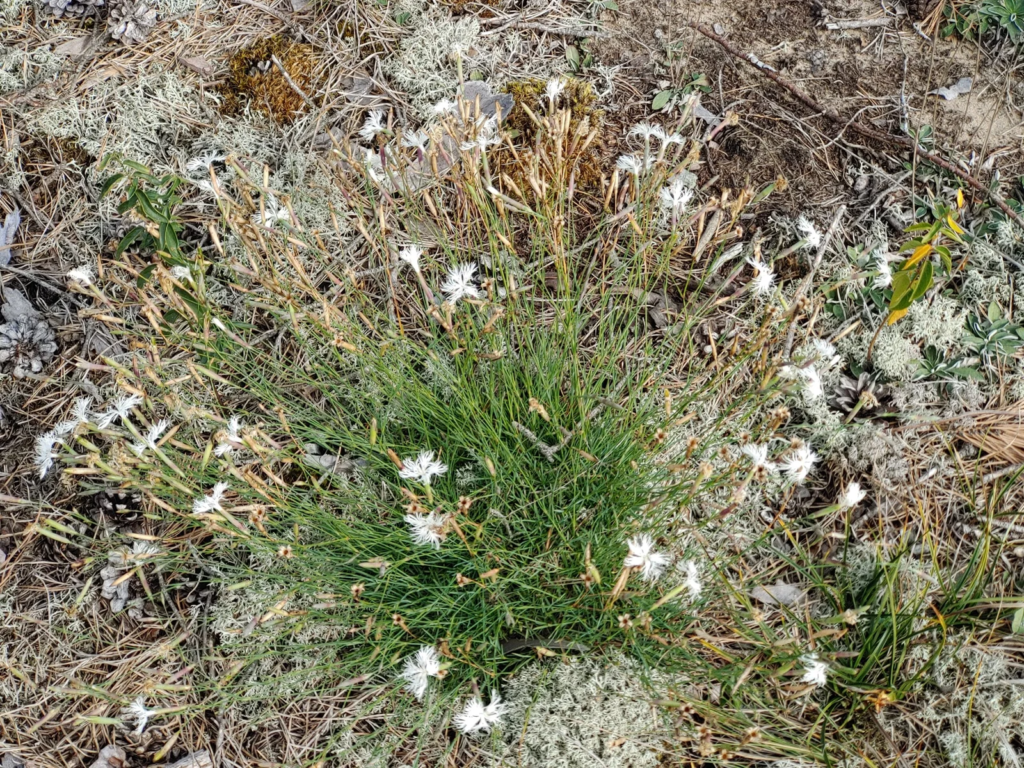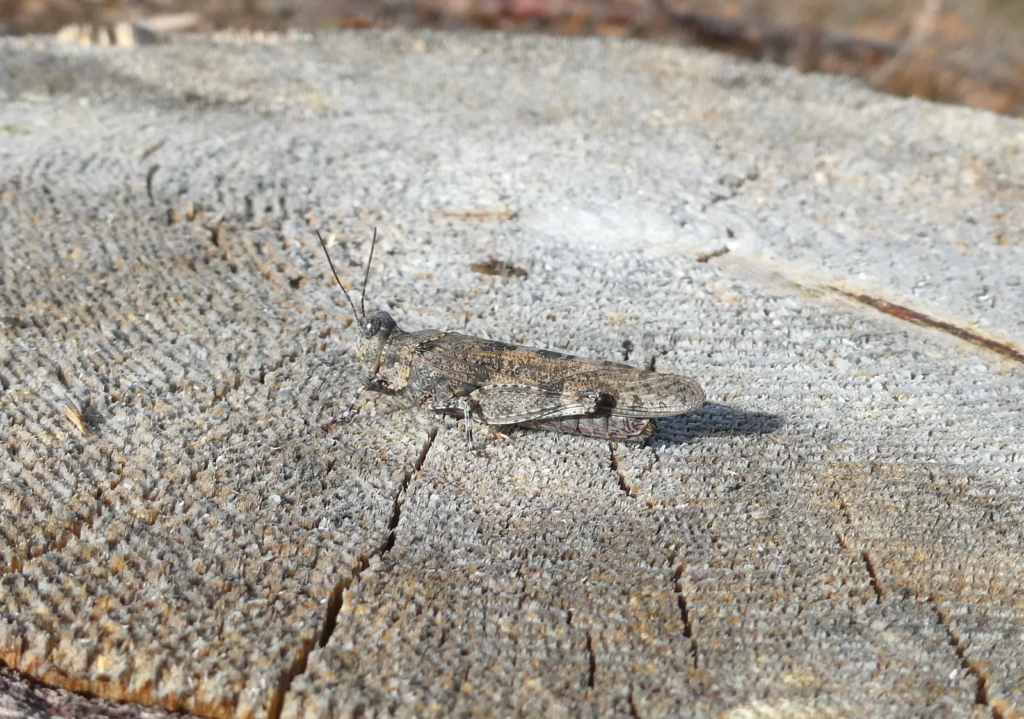In January this year, 12.8 hectares of naturally valuable lowland dunes were opened in Dzūkija National Park along the Marcinkoniai-Varėna road, after the clearing of a plantation forest for economic purposes.
Today, it is possible to rejoice that a pre-planned nature management measure, already at the initial stage, is already producing its first results. A visit to the Dzūkija dunes reveals a gradual increase in biodiversity, the recovery of warm-temperate open sand plant and insect species.
Plants on Lithuania’s list of protected species return
“The project work to open up the Dzūkija Continental Dunes is still in its early stages – the forest has been cleared, but many branches remain, and the moss cover and forest undergrowth have been cleared only in small areas. To achieve the final result, they will have to be removed mechanically or by burning. There is still a lot of work to be done, but some sand plants are already trying to establish themselves,” says Dr Dalytė Matulevičiūtė, a nature conservation expert (botanist) at the State Service for Protected Areas.
She says that sandwort and common thyme can already be found in open habitats. Other species are also becoming more abundant in the cleared areas due to reduced competition from mosses and better light conditions. For example, the sandwort and the windflower have been included in the list of Lithuanian protected species.
“Groups of the latter species form in spite of the branches in the area. The Sand Carnation is much more abundant, with its white-flowered shrubs particularly abundant closer to the road. At first we tried to count them, but as we approached the 200 mark we lost count. Based on the plant density estimate, we can guess that there are more than 350 stems of the Sandhill Carnation. The first results are encouraging. Next spring, after further logging work, we should have more pleasant surprises,” said the expert.

Eastern pasqueflower. Photo: Giedrius Švitra

Sand pink. Photo: Giedrius Švitra
Insects listed in the Red Data Book of Lithuania were also found
Dr Eduardas Budrys, Senior Researcher at the Nature Research Centre, echoed the nature conservation expert, saying that the open, sandy habitats provide habitat for rare and endangered species: “These habitats are valuable from the point of view of biodiversity, and they are essential for the survival of various plant bird and insect species.
During his visit to the Dzūkija dunes, which were opened this year, he shared his discovery of a number of blue-winged sand grasshopper species listed in the Red Data Book of Lithuania. “This is one of the indicator species whose appearance shows that the condition of the open ecosystem there is improving. In such open habitats (dunes), viable populations of copepods can form,” he said.

Sand grasshopper. Photo: Nerijus Žitkevičius

Sand grasshopper. Photo: Giedrius Švitra
Funded by the European Union LIFE programme. The contents of this publication are the sole responsibility of and do not necessarily reflect the opinion of the European Union.
